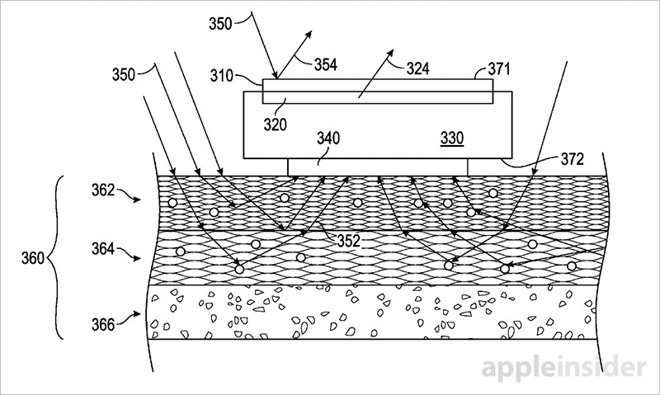
Apple has patented a new method of measuring ambient light that could bring its True Tone display technology to a future Apple Watch. The invention uses a special sensor to measure light through a user’s skin, allowing it to be placed on the back of the device.
Because the Apple Watch is so small, and its entire front is its display, there is no room for front-facing sensors or cameras — which is where you would normally find an ambient light sensor. But in typical Apple fashion, the company has found a way around that.
In a patent application titled “Ambient light sensing through the human body,” which was published by the U.S. Patent and Trademark Office on Tuesday, the company describes a method of measuring ambient light using sensors in the back of Apple Watch.
“The human body, or more particularly, the skin and flesh of the human body can become an interface between incident light and the optical sensor,” Apple explains. That means the sensor could measure ambient light that is reflected back off your skin.
“In certain embodiments, the system is tuned to compensate for attenuation of light through the skin, and different types of skin, using physical filters and software,” explains AppleInsider, which first discovered today’s filing.
“Apple notes software solutions can be adaptive, or dynamically tunable based on previously capture results or via manual configuration.”
Not only could this sensor allow for automatic brightness adjustment, which could help conserve Apple Watch battery life when its display doesn’t need to be so bright, but it could also allow the display to adjust its colors based on the lighting in the room.
Apple’s 9.7-inch iPad Pro already does this using a terrific technology called True Tone. Fans were hoping the same feature would be available in the iPhone 7 and iPhone 7 Plus this year, but alas, we’ll have to wait longer for it to reach our pockets.
By placing the sensor in the back of Apple Watch, Apple not only negates the need to place a sensor on the front of the device, but it also avoids inaccurate light readings that may occur as a result of things like shirt sleeves obstructing a front-facing sensor.
Apple also describes how the ambient light sensor could be used in conjunction with other onboard sensors, like the accelerometer, to determine when a user is sleeping and then automatically put the Apple Watch into power saving mode.
Like all Apple patents, this one isn’t a guarantee of things to come — but it does give us some insight into the things the Cupertino company is working on.
[via USPTO, AppleInsider]